Queen Elizabeth National Park - located in southwestern Uganda, is one of East Africa's most popular wildlife reserves. Established in 1952, it covers an area of approximately 1,978 square kilometres.
The park is named after Queen Elizabeth II of the United Kingdom, and is renowned for its diverse ecosystems, which include savannahs, wetlands, forests, and lakes. This variety of ecosystems supports an incredible range of wildlife, including over 95 mammal species and more than 600 bird species.
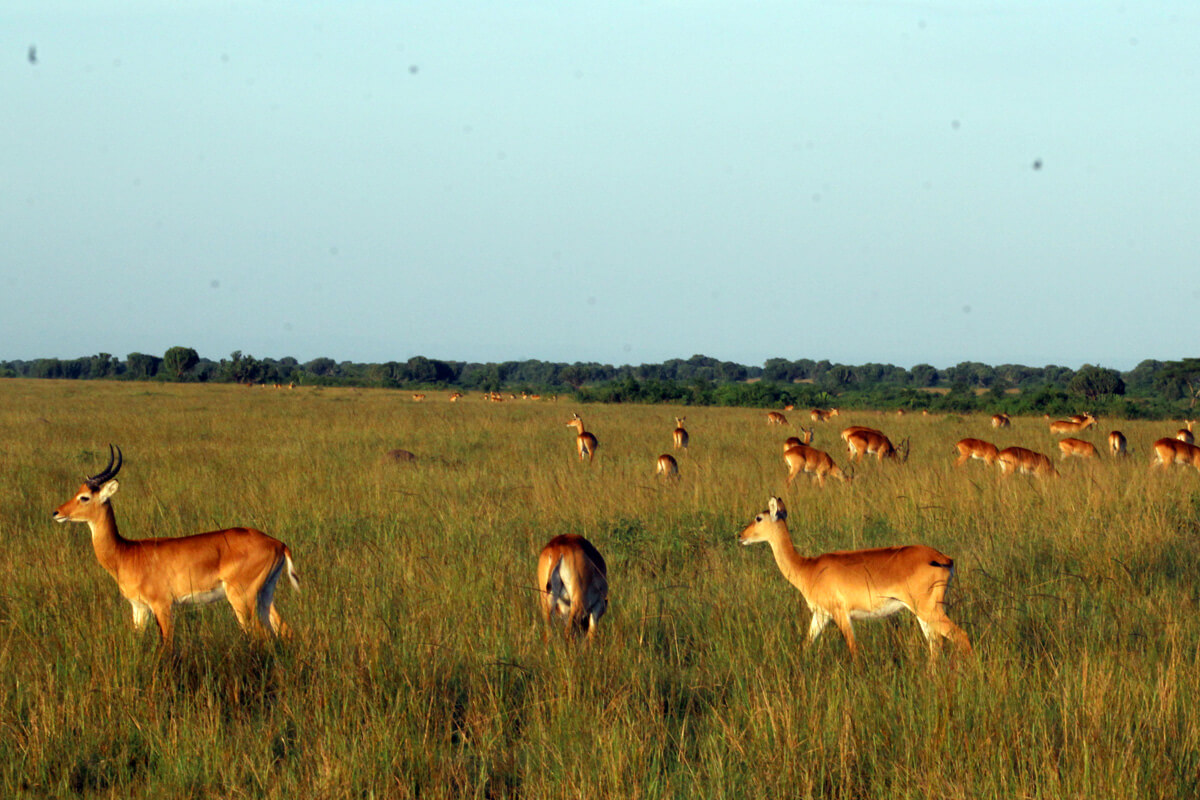
The park's famous residents include elephants, lions, hippos, crocodiles, leopards, and chimpanzees. Its scenic beauty is accentuated by features like the Kazinga Channel, the Mweya Peninsula, and the Rwenzori Mountains on the horizon.
Location & Accessibility
Queen Elizabeth National Park is situated in the western region of Uganda - 400 kilometers west of Kampala, Uganda's capital city. The park (QENP) is one of Uganda's popular attractions can be accessed by road and by air.
By Road
The park is accessible by road, with the main routes being:
- Kampala via Mbarara: This is the most popular route, taking approximately 5-6 hours. The road is well-paved and offers scenic views of the Ugandan countryside.
- Kampala via Fort Portal: This route takes about 6-7 hours and passes through the beautiful Fort Portal region, known for its tea plantations, many craters and the Rwenzori Mountains.
Other well known attractions like Bwindi, Kibale, Lake Mburo and Rwenzori national parks are close to Bwindi and can be accessed by road in a few hours. If you are already visiting any of these parks, your drive to Queen Elizabeth will be much shorter.
By Air
For a quicker and more comfortable journey, travelers can choose to go by domestic flights. There are scheduled and charter flights from Entebbe International Airport to airstrips at Mweya and Kasese.
The flight takes around 1-2 hours, offering stunning aerial views of the park and its surroundings.
Domestic flights can also be taken from nearby attractions such as Murchison Falls National Park and Bwindi Impenetrable National Park - which have nearby airstrips, and are very popular with visitors.
Things to Do (Activities)
Queen Elizabeth National Park is a great place to visit and it offers a wide array of activities that cater to different interests. Here are some of the must-do activities:
1. Game Drives
Embark on a game drive through the park’s diverse landscapes. The Kasenyi Plains are particularly popular for spotting lions, Uganda kobs, elephants, and buffaloes. Early morning and late afternoon drives are the best times for wildlife viewing.
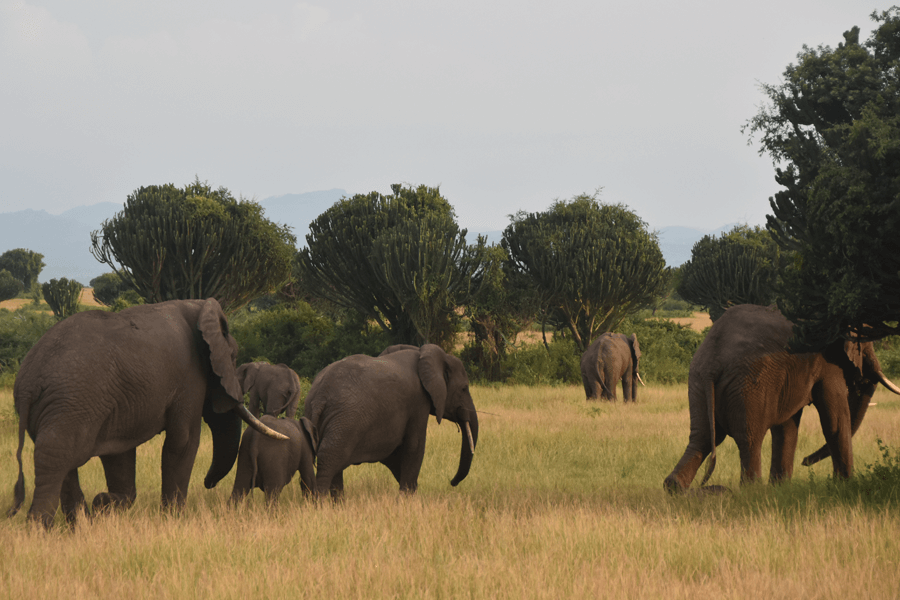
2. Chimpanzee Tracking in Kyambura Gorge
The Kyambura Gorge, also known as the "Valley of Apes," is home to a small habituated population of chimpanzees. A guided trek through the lush forest offers a chance to observe these primates in their natural habitat.
The Gorge's thick forest lies below the flat savannah landscape, creating a dramatic beauty that only nature could bring forth.
3. Bird Watching
With over 600 bird species recorded, Queen Elizabeth National Park is a paradise for bird watchers. Notable species include the African fish eagle, martial eagle, papyrus gonolek, and the shoebill stork. The Maramagambo Forest, Kazinga Channel, and the Ishasha sector are prime bird-watching locations.
4. Boat Safaris on the Kazinga Channel
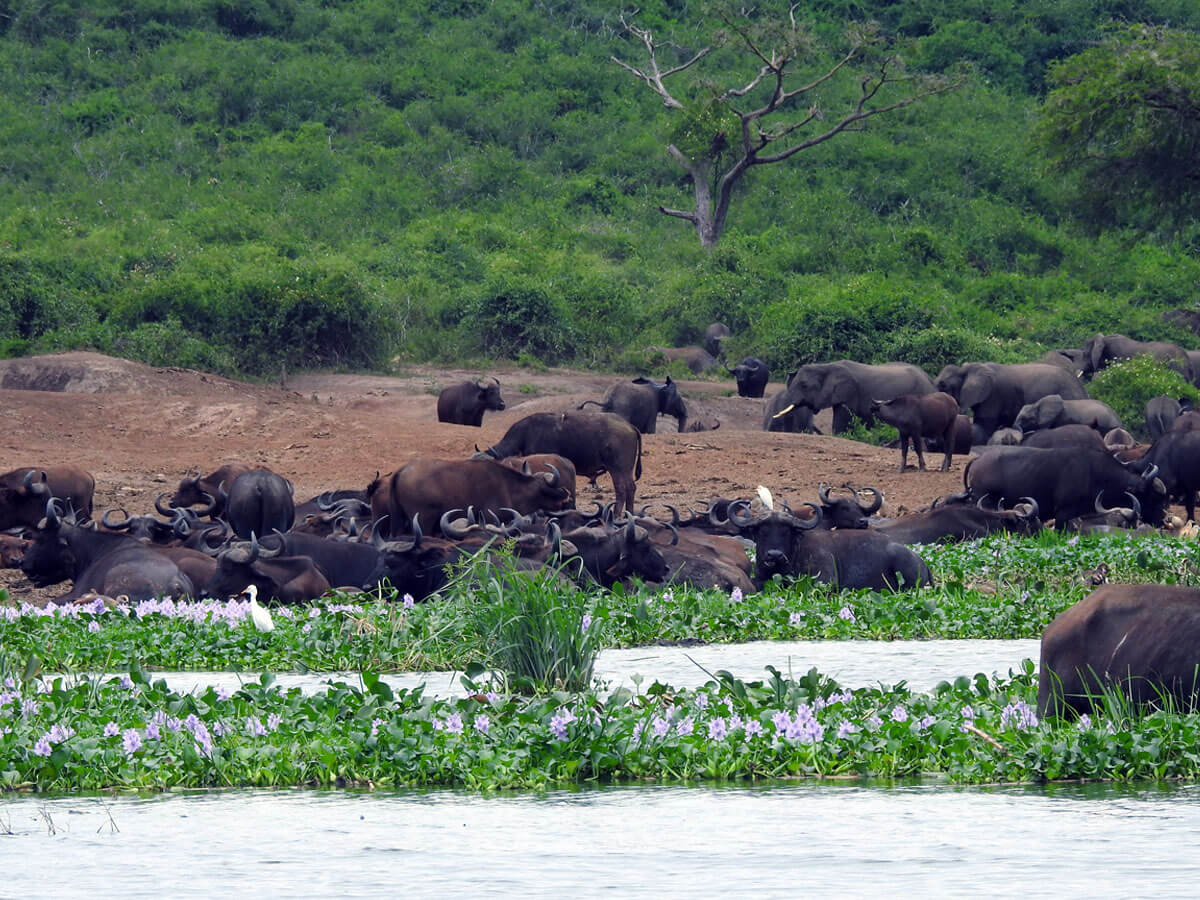
A boat cruise along the Kazinga Channel, which connects Lake Edward and Lake George, is a highlight of any visit. This channel attracts a high concentration of wildlife, including hippos, crocodiles, elephants, and a plethora of bird species. The boat ride offers a unique perspective of the animals as they come to the water’s edge to drink and bathe.
5. Exploring the Ishasha Sector
The Ishasha sector, located in the southern part of the park, is famous for its tree-climbing lions. These unique lions can often be seen lounging in the branches of fig trees - watching over their territory. The area also hosts large herds of buffalo, elephants, and topis.
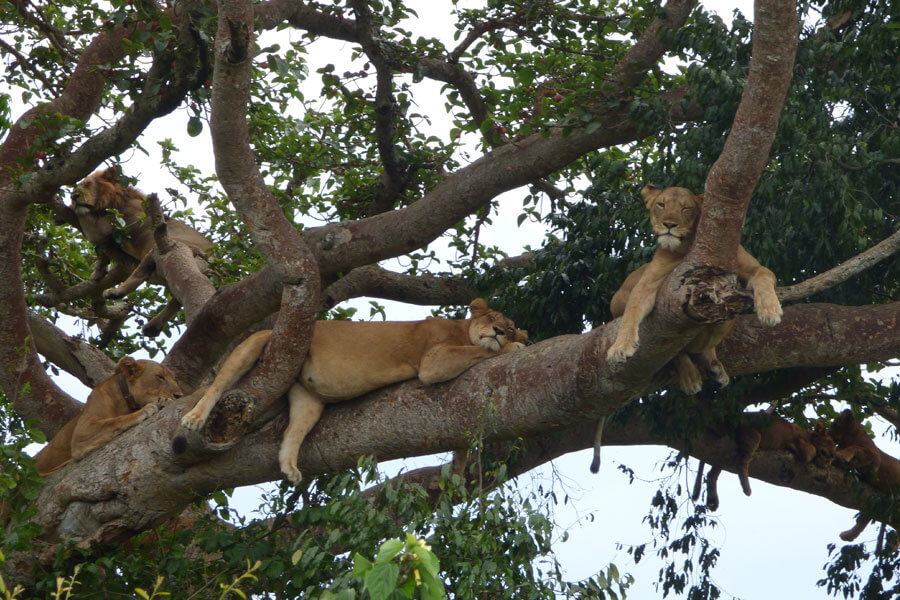
6. Nature Walks and Hikes
Guided nature walks are available in different parts of the park. These escorted hikes are great for scenic views, spotting smaller wildlife and truly feeling connected and one with the nature around you. The craters, Kyambura gorge, Kasenyi and Mweya are popular spots for guided walks.
7. Cultural Encounters
Engage with the local communities living around the park. Cultural tours can be arranged to visit the nearby villages, where visitors can learn about the traditional ways of life, music, dance, and crafts of the Bakonzo, Basongora, and Banyankole tribes.
Accommodation / Places to Stay
Queen Elizabeth National Park offers a variety of accommodation options to suit different budgets and preferences.
Luxury Lodges
- Mweya Safari Lodge: Located on the Mweya Peninsula, this lodge offers luxury accommodation with stunning views of the Kazinga Channel. It features a swimming pool, spa, and restaurant.
- Kyambura Gorge Lodge: This boutique lodge is set on the edge of Kyambura Gorge and provides a luxurious and intimate experience with modern amenities and personalized service.
- Ishasha Wilderness Camp: Situated in the Ishasha sector, this tented camp offers a luxurious wilderness experience with comfortable tents, gourmet meals, and excellent game viewing opportunities.
Mid-Range Lodges
- Elephant Plains Lodge: Located near the Kasenyi Plains, this lodge offers comfortable rooms with excellent views of the park and a range of amenities including a swimming pool and restaurant.
- Enganzi Game Lodge: Perched on a hill overlooking the park, this lodge provides spacious cottages with stunning views, a swimming pool, and a restaurant.
Budget Lodges and Campsites
- Pumba Safari Cottages: Located near the Kyambura Gorge, these cottages offer affordable accommodation with basic amenities and beautiful views.
- The Bush Lodge: Situated along the Kazinga Channel, this eco-friendly lodge offers budget accommodation in bandas and tents, along with a restaurant and bar.
Seasons & Best Time to Visit
Queen Elizabeth National Park can be visited year-round, but the best time to visit depends on your interests and activities.
Dry Season
The dry season happens during the months of June to September and December to February. This is characterised by little to no rain, clear skies and hot days.
- This is the best time for game viewing as animals gather around water sources.
- The vegetation is thinner, making it easier to spot wildlife.
- Bird watching is also excellent during this period as migratory birds are present.
Wet Season
The wet season happens during the months of March to May and October to November. This time, the afternoon rains are more regular, and the temperatures are slightly cooler than the dry season.
- The landscape is lush and green, making it ideal for photography.
- Fewer tourists, resulting in a more peaceful experience for those who don't enjoy crowds.
- This is a good time for bird watching as resident birds are nesting.
Climate Chart for Queen Elizabeth N.P
Here is a climate chart showing the average monthly rainfall and temperatures in Queen Elizabeth National Park to help you clearly understand the conditions throughout the year.
| Month | Avg. Temp (°C) | Avg. Temp (°F) | Avg. Rainfall (mm) |
|---|---|---|---|
| January | 25 | 77 | 50 |
| February | 26 | 79 | 60 |
| March | 25 | 77 | 130 |
| April | 24 | 75 | 170 |
| May | 24 | 75 | 140 |
| June | 23 | 73 | 50 |
| July | 23 | 73 | 50 |
| August | 24 | 75 | 70 |
| September | 24 | 75 | 90 |
| October | 24 | 75 | 140 |
| November | 24 | 75 | 150 |
| December | 24 | 75 | 80 |
Related article: Best time to visit Uganda for a safari
Nearby Attractions
While Queen Elizabeth National Park is a fulfilling destination in itself, there are several nearby attractions that are worth exploring:
1. Rwenzori Mountains National Park
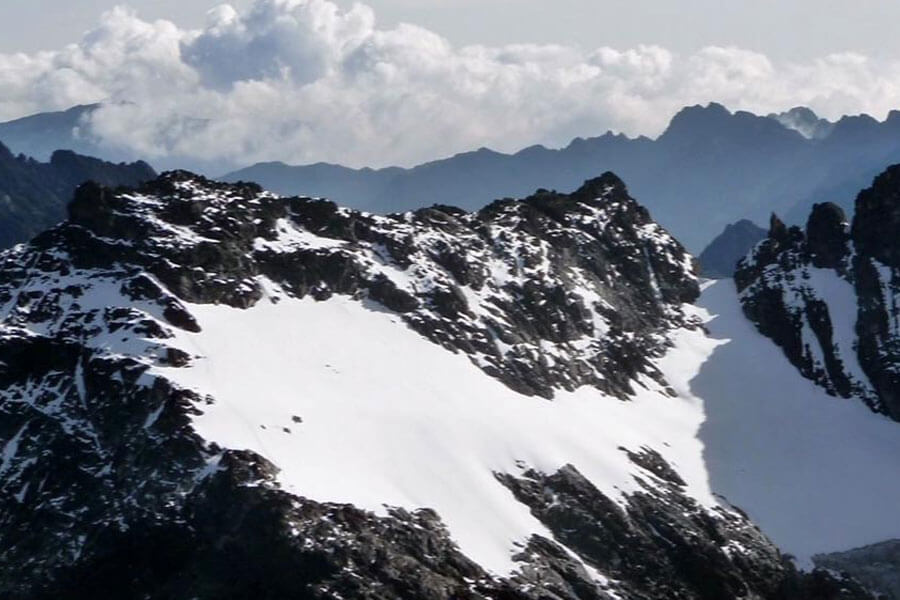
Also known as the "Mountains of the Moon," this park is famous for its stunning mountain scenery and challenging hiking opportunities. The Rwenzori Mountains offer a range of hikes - from short nature walks to multi-day climbs to the peaks.
2. Kibale National Park
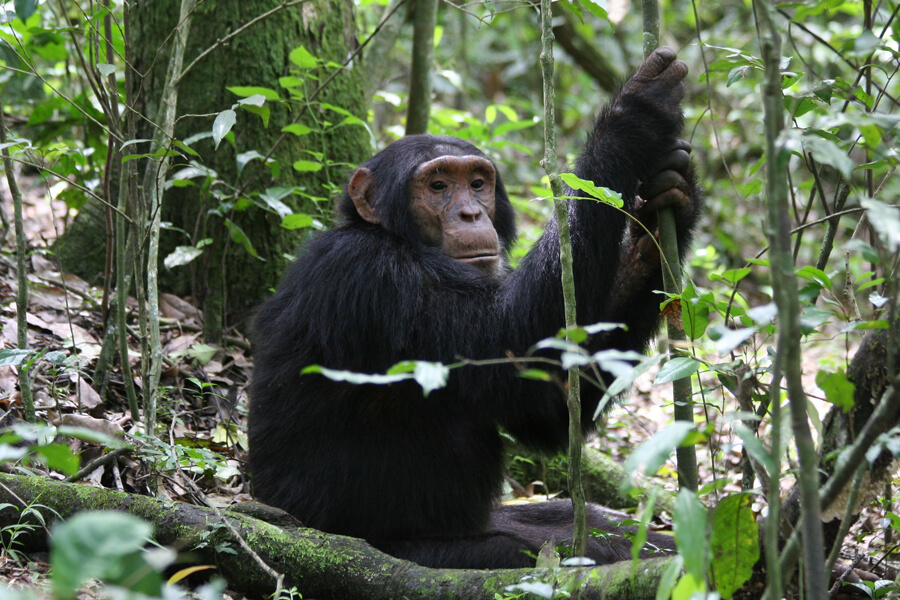
Located less than 2 hours from Queen Elizabeth National Park, Kibale is renowned for its primate population - particularly chimpanzees. Chimpanzee tracking is a very popular activity here that allows many guest to get an up close encounter with chimps in their natural habitat.
3. Bwindi Impenetrable National Park
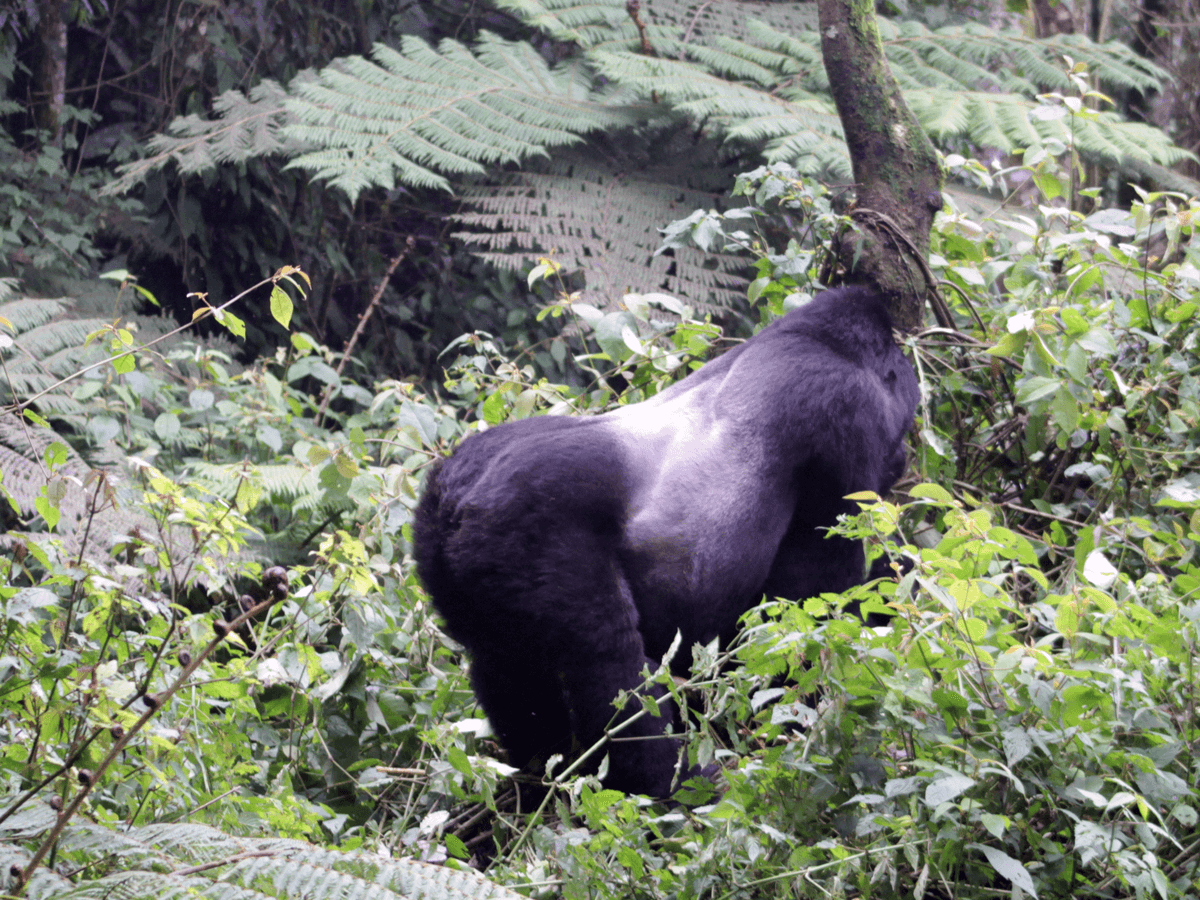
Bwindi Impenetrable National Park is one of the most ecologically diverse places on earth, but its popularity is because of mountain gorillas. It is home to about 50% of all mountain gorillas in the world, and receives visitors all year round - for a chance at a personal encounter with these magnificent primates.
Gorilla trekking allows the visitors to spend 1 hour with the gorillas, deep in the heart of the dense forest.
4. Lake Mburo National Park
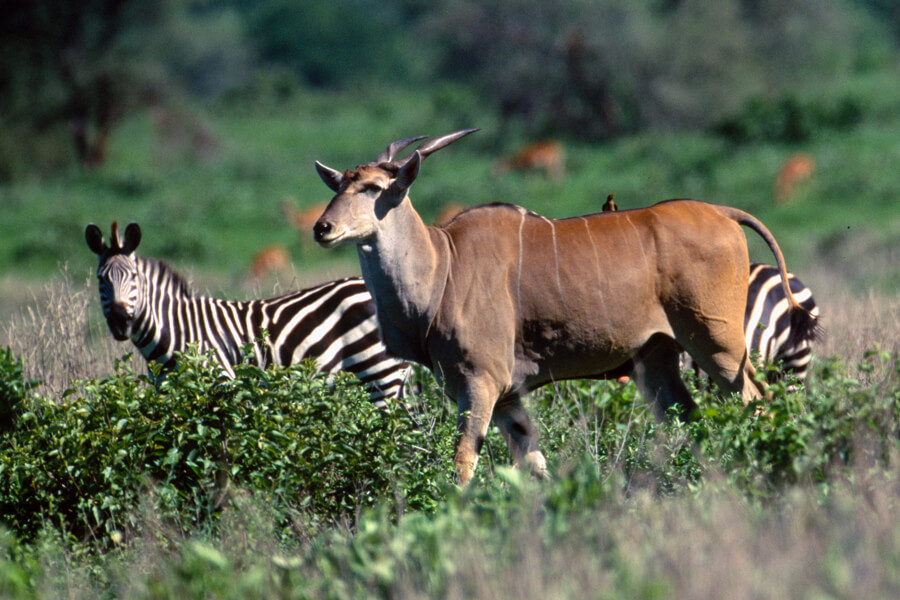
Lake Mburo is a smallest savannah park that is known for its beautiful landscapes and large populations of zebras, impalas, and elands. Boat trips on Lake Mburo offer excellent bird watching and hippo viewing opportunities.
5. Crater Lakes
The area around Fort Portal, north of Queen Elizabeth National Park, is dotted with picturesque crater lakes. These lakes offer opportunities for hiking, bird watching, and simply relaxing.
Closing Thoughts
Queen Elizabeth is regarded as Uganda's most popular national park for good reason. The diverse ecosystems which host a wide variety of animals, birds, primates and stunning landscapes.
You may choose to spend a full day in the park looking for animals and more animals, or enjoy a relaxing boat ride on Kazinga channel - with animals all around you. You can also explore the forest in Kyambura gorge, as well as the nearby forests and communities.
Whether you are visiting Queen Elizabeth on its own, or as part of a longer trip with many attractions - you will have a wonderful time and make some lasting memories in Queen Elizabeth National Park.
